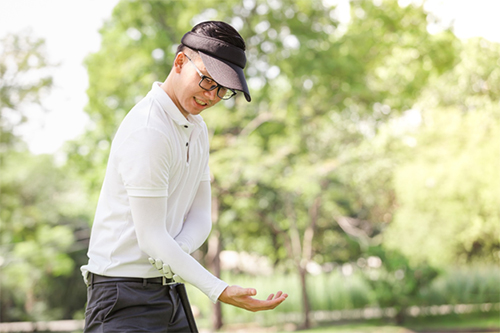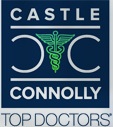
Golfer’s elbow, known by medical professionals as medial epicondylitis, is a painful condition of the inner elbow. It is caused by tendinitis or inflammation of the tendons that connect your elbow to your forearm. The pain is usually centered on the bony part of the inside of the elbow, but it may also radiate to the forearm.
Golfer’s elbow is similar to the more common tennis elbow. The difference between the two conditions is that Golfer’s elbow affects the tendons on the inside of your elbow, while tennis elbow affects the tendons on the outside. Both are caused by repeated or excess use of the forearm muscles.
Signs and Symptoms of Golfer’s elbow include:
- Golfer’s elbow causes achy pain that can appear either suddenly or gradually. The pain occurs on the inside of the elbow and often radiates down the inner side of the forearm to the wrist. This pain usually increases with certain movements such as gripping or bending the wrist forward to the forearm.
- Stiffness can cause decreased range of motion in the elbow.
- Golfer’s elbow often causes weakness in the hand and wrist, especially when trying to grip.
- Numbness or Tingling. Numbness and tingling can cause a pins and needles sensation that extends into the fingers. The most commonly affected fingers are the ring and little finger.
Golfer’s elbow is usually related to overuse of the muscles and tendons in the forearm. Most people who develop it do so by performing a gripping, flexing, or swinging movement repetitively for at least an hour every day. Despite its name, Golfer’s elbow does not just affect golfers. It occurs in people who frequently play racket or throwing sports. Weightlifters are at risk for developing it as well. Some jobs such as carpentry, construction, and plumbing also make workers prone to Golfer’s elbow because of the repetitive movements used to perform their work. Other risk factors for developing Golfer’s elbow include improper movement techniques, too little warm up, and poor conditioning.
In most cases, Golfer’s elbow will heal on its own with conservative treatments that can easily be performed at home. Rest is the first treatment. Taking a break from the repetitive movement that injured the tendons will allow time for the tendons to heal and recovery to happen more quickly. You should rest the elbow until the pain goes away. Applying ice to the elbow is another conservative treatment. Ice can be used for 15 minutes at a time 3 to 4 times a day to decrease inflammation. Over the counter pain relievers such as acetaminophen or nonsteroidal anti-inflammatory drugs (NSAIDs) can also be helpful in managing pain and reducing inflammation. Another treatment option is wearing an elbow brace to help restrict movement. Eccentric exercises and stretching like those completed in occupational therapy can also help in the healing process. Corticosteroid or platelet-rich plasma injections are slightly more invasive treatment options. Finally, surgery is an option if the pain persists despite treatment. See your doctor if your pain does not improve after conservative treatment. They will examine your elbow, provide a diagnosis, and suggest the right treatment plan for you.
Dr. Ryan Colley attended medical school at Midwestern University Arizona College of Osteopathic Medicine. He completed residency in orthopedic surgery at Ohio University studying all fields of orthopedics including trauma, joint replacement, sports medicine, pediatrics, and hand surgery. He focuses on all aspects of upper extremity joint replacement, reconstruction, trauma, and arthroscopy. He also performs robotic assisted total knee replacement. He has authored a number of publications and book chapters. He takes a holistic approach to improve the quality of life for his patients. In his free time, Dr. Colley enjoys time with his wife and two children. They love to hike, fish, snowboard, and travel.




 Book an Appointment
Book an Appointment
 Patient Portal
Patient Portal
